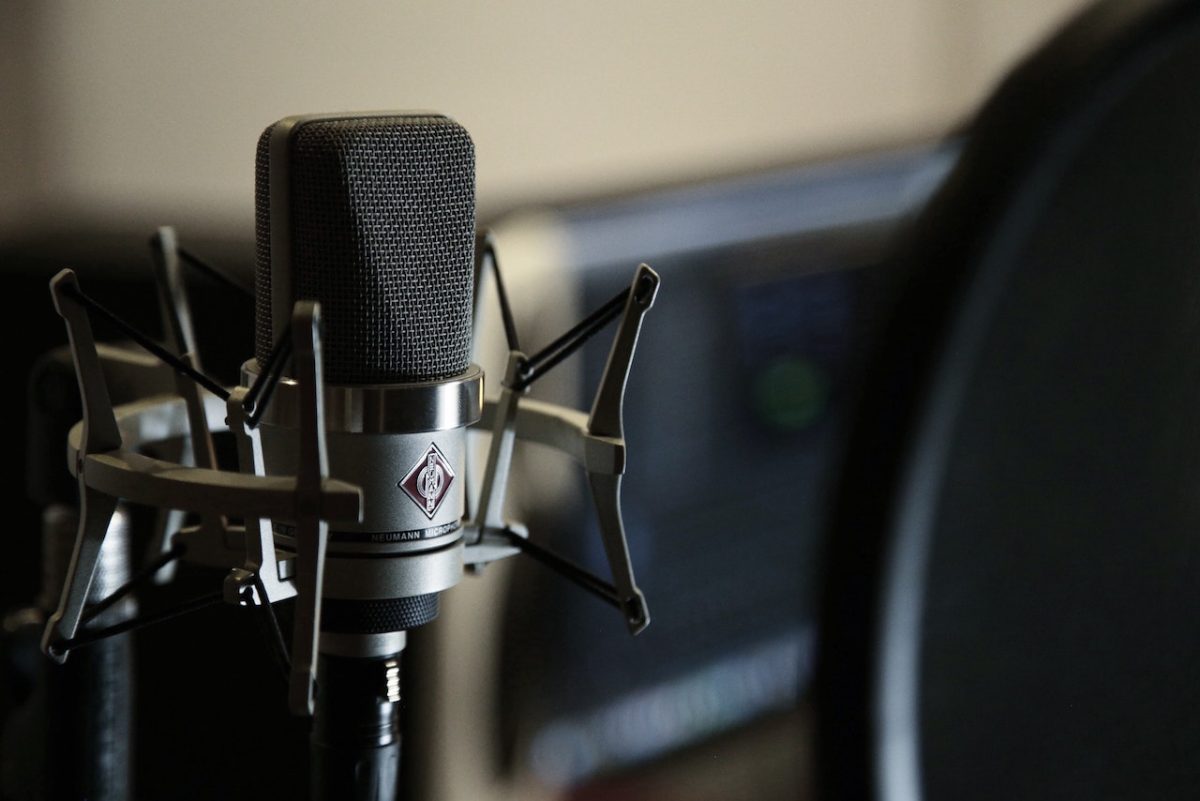
If you’re new to the world of audio recording or simply curious about the different types of microphones out there, you’ve come to the right place. In this blog post, we’ll delve deeper into how condenser microphones work and explore their different types and polar patterns.
We’ll also discuss the benefits and considerations when using them in various recording environments. Whether you’re a beginner or an experienced audio enthusiast, this post will provide you with a solid foundation to understand and appreciate the capabilities of condenser microphones.
What is a condenser microphone? A condenser microphone is a mic that’s diaphragm is sustained by a solid plate and is very light. The pressure created by sound waves on the diaphragm results in its movement. Condenser microphones are often employed for picking up soft sounds due to their narrow diaphragm and high sensitivity.
What is a condenser microphone?
Condenser microphones, also known as “capacitor microphones,” are commonly used in recording studios due to their high fidelity and precision. Condenser microphones are ideal for recording vocals and high-frequency sounds.

A condenser microphone is similar to a capacitor but with additional features.
- A capacitor is a passive electrical component that temporarily stores energy in an electric field. Two parallel plates create a capacitance in a capacitor. As the distance between two things gets smaller, their ability to hold an electric charge, or capacitance, goes up.
- The diaphragm of a condenser microphone is suspended from a solid plate and weighs very little. The diaphragm moves in response to sound wave pressure. When sound waves strike the diaphragm, it vibrates, changing the distance between the plates. The resulting capacitance change represents the electrical representation of the acoustic energy from the input source.
A condenser microphone works by picking up sound with a membrane called a diaphragm coated with a conductor, like gold. This membrane is attached to a metal plate that forms the device’s rear. The diaphragm vibrates very near the backplate when sound waves strike it.
A microphone records the pressure fluctuations in the air caused by the membrane’s vibration against the capsule’s metal backplate.
Simply put, a microphone records the pressure fluctuations in the air caused by the membrane’s vibration against the capsule’s metal backplate (the sound waves). To record the difference in pressure between the diaphragm and the backplate (capacitance), a voltage is applied, amplified, and then turned into a representation of sound waves in the recording device or software.
AKAI Professional MPK Mini MK3

AKAI Professional MPK Mini MK3
When should you use a condenser microphone?
For the most part, condenser microphones are the go-to for capturing a human voice. Because the human voice makes a sound at a level that works well for most recording situations, the mic picks up a lot of information and does a good job reproducing natural tones.
Acoustic instruments are also recorded using condenser microphones. It’s common knowledge that condenser microphones are the best choice for recording acoustic instruments like guitars and other stringed instruments.
Due to their sensitivity, condenser microphones may also record environmental noise. As a result, making sound effects produced on a soundstage seem more realistic is a common practice in the film industry.
The different types of condenser microphones
Condenser microphones come in two basic varieties: large-diaphragm and small-diaphragm. Each is unique in some aspect of audio recording and is used in somewhat different ways.
- Large-diaphragm condenser microphones: Large-diaphragm microphones often have a side-firing input. That’s because the diaphragm’s length of almost an inch increases the capsule’s exposed area. A large-diaphragm condenser microphone is often put in the same spot in a recording studio. Large-diaphragm condenser microphones are often used to pick up the richness and fullness of low-end sounds. This creates a widening effect that fills an audio space in the mix.
- Small-diaphragm condenser microphones: Small-diaphragm condenser mics are often long and thin, and their diaphragms are less than an inch long. Because of their small size, they are sometimes called “pencil microphones.” Most of the time, the diaphragm of a unit like this will be facing forward, and the sound source will be pointing up into the top of the microphone.
Although small-diaphragm condenser mics may be handled with a hand, many studios prefer to record with them on a desk or in a rack. Little diaphragm microphones readily capture transients and other high-end noises.
Advantages and disadvantages of using a condenser microphone
Condenser microphones are often used in recording studios and other places where clarity and sensitivity are important. Listed below are some benefits and drawbacks of condenser microphones:
Pros (advantages) of condenser microphones
- Frequency response: They have a wide frequency response range, allowing them to capture a broader range of frequencies, from low bass to high treble, resulting in more accurate and natural sound reproduction.
- Transient response: Condenser microphones excel at capturing transient sounds, such as the attack and decay of musical instruments, ensuring an accurate representation of fast and dynamic audio sources.
- High-quality sound: Due to their design and sensitivity, condenser microphones often deliver exceptional audio quality, providing a more detailed and nuanced sound reproduction.
- Extended High-Frequency Range: Condenser microphones can capture high-frequency sounds more accurately, resulting in crisp and clear recordings, particularly in capturing vocals and instruments with harmonics in the upper-frequency range.
- Low Self-Noise: Condenser microphones typically have low self-noise levels, allowing for cleaner recordings, especially in quiet environments or when capturing subtle sounds.
- Polar Pattern Options: Condenser microphones often offer selectable polar patterns, such as cardioid, omnidirectional, or figure-8, providing flexibility in capturing sound from different directions and adapting to different recording scenarios.
- Professional-Grade Performance: Condenser microphones are commonly used in professional audio settings, including recording studios and broadcasting, due to their high-quality sound reproduction and ability to capture the nuances of vocals and instruments accurately.
Cons (disadvantages) of condenser microphones
While condenser microphones offer numerous advantages, they also have a few disadvantages to consider:
- Price: Condenser microphones tend to be more expensive than dynamic microphones, making them less accessible for those on a tight budget.
- Power Requirements: Many condenser microphones require phantom power, which means they rely on external power sources, such as an audio interface or mixer, to operate. This additional power requirement can limit their use in certain recording situations or setups.
- Noise Sensitivity: Condenser microphones can be more prone to picking up ambient room noise or electrical interference, especially in less controlled or noisy environments. This can result in a higher noise floor and require careful consideration of the recording environment.
- Power Consumption: Some condenser microphones, especially those with built-in electronics or features like onboard preamps, may consume more power, impacting battery life or requiring additional power supply considerations.
- Fragility: Condenser microphones may not be the best choice for outdoor or harsh environments due to their sensitivity to moisture, extreme temperatures, and other environmental factors. They are typically better suited for controlled indoor recording situations.
- Limited Low-Frequency Capture: While condenser microphones excel in capturing high-frequency details, they may not capture extremely low-frequency sounds as accurately as specialized microphones designed for low-frequency applications.
It’s important to consider these disadvantages alongside the advantages to determine if a condenser microphone is a right choice for your specific recording needs and environment.
If you want even more tips and insights, watch this video called “What Is a Condenser Microphone?” from the Sweetwater YouTube channel.
Frequently asked questions (FAQ)
Do you still have questions? Below are some of the most commonly asked questions about condenser microphones.
Which is better, condenser or dynamic mic?
It depends on your use. Condenser microphones record softer sounds and higher frequencies, while dynamic microphones are better suited to recording loud, powerful sounds (such as drums or loud vocals), especially in a live setting.
Can you use a condenser mic for live vocals?
Since a condenser mics frequency response is typically approximately 50 Hz–20 kHz, it is optimized for live voices. It removes the low-end boom and closeness effect that can happen when singing in a small space.
However, Condenser microphones are typically less rugged than dynamic microphones and may not be suited to applications like a live performances.
What’s the difference between a dynamic and a condenser microphone
Dynamic microphones pick up sound waves and convert them into electrical signals using a diaphragm, voice coil, and magnet. Condenser microphones use an electrically charged diaphragm, which vibrates and generates an electrical signal proportional to the sound.
Conclusion
We hope this article helped you understand a condenser microphone and why many professionals use it when recording their tracks. Just keep its durability in mind too! In the end, it’s all about your sound quality and how you perform. So, before you purchase, try out different types to find the right type of condenser microphone for your needs.
This article covered what a condenser microphone is, the types of a condenser microphone, and how it works. Here are some key takeaways:
Key takeaways
- Condenser microphones most effectively capture high-frequency sounds.
- A condenser microphone picks up sound with a membrane called a diaphragm coated with a conductor.
- Condenser microphones have a superior transient response.
- Condenser microphones require external power.
- Large-diaphragm condenser microphone excels at recording vocals.
So, does a condenser microphone suit your needs? And did I cover everything you wanted to know? Let me know in the comments section below (I read and reply to every comment). If you found this article helpful, share it with a friend, and check out my full blog for more tips and tricks on music production. Thanks for reading, and never stop making music.















